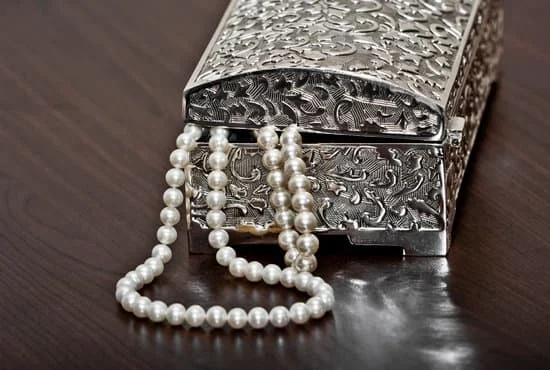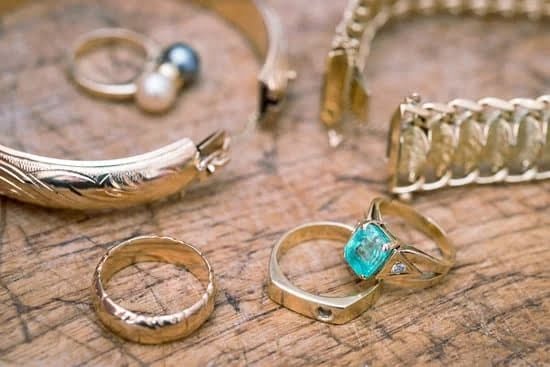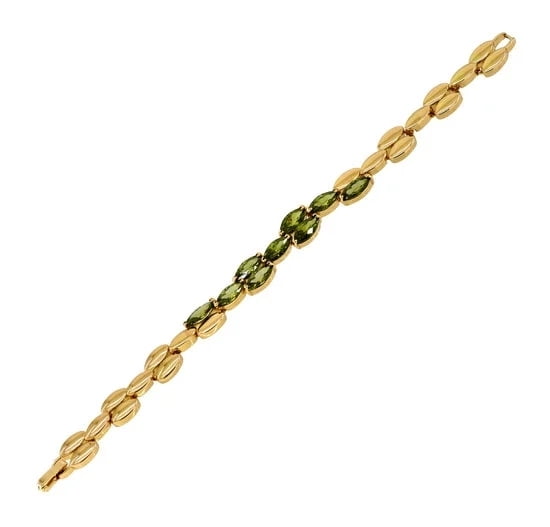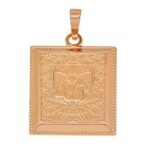Gold jewelry has long been a symbol of wealth, elegance, and sophistication. Whether it’s an heirloom piece or a recent purchase, there may come a time when you consider selling your gold jewelry. But before you embark on this journey, it’s essential to understand how much you can expect to get in return for your precious belongings.
In this article, we delve into the intricacies of selling gold jewelry and explore the factors that determine its value. We will guide you through the steps necessary to maximize your profits and equip you with the knowledge needed to navigate the various methods of selling. Additionally, we will provide tips and tricks to help you negotiate and ensure a smooth transaction while protecting yourself from common scams.
By unraveling the mysteries behind karat weight, current market prices, design aesthetics, and more, we aim to empower you with comprehensive information that will assist in making informed decisions about selling your gold jewelry. Together, let us embark on this intriguing journey into the world of selling gold jewelry and discover just how much you can get when parting with your cherished pieces.
The Factors that Determine the Value of Gold Jewelry
Gold jewelry holds a special place in many people’s hearts. Whether it’s a family heirloom or a carefully selected piece, selling gold jewelry can seem like a daunting task. However, understanding the factors that determine the value of your gold jewelry can help you navigate this process with confidence.
One crucial factor that determines the value of gold jewelry is its karat weight. Karat refers to the purity of the gold, with 24 karats being pure gold. Jewelry is typically made with lower karat gold due to its malleability and durability. The higher the karat weight, the more valuable the piece may be. It’s important to note that different countries may use different systems for measuring purity.
Another significant factor in determining the value of your gold jewelry is the current market price of gold. Gold prices fluctuate daily based on various economic factors such as supply and demand, geopolitical events, and economic indicators. Staying informed about these fluctuations can give you an idea of how much you can expect to receive when selling your jewelry.
The design and craftsmanship of your gold jewelry also play a role in its value. Unique and intricate designs crafted by renowned artisans are often highly sought after by collectors and may fetch a higher price than simple designs. High-quality craftsmanship can add value to your piece as well, ensuring that it stands the test of time.
| Karat Weight | Percentage Gold Content | Value Compared to Pure Gold |
|---|---|---|
| 24K | 99.9% | Highest Value |
| 18K | 75% | Lower Value |
| 14K | 58.3% | Even Lower Value |
Understanding these factors can help you make informed decisions when it comes to selling your gold jewelry. Whether you’re considering parting with a single piece or an entire collection, being aware of the value that each factor adds can help maximize your profits.
Preparing to Sell
When it comes to selling your gold jewelry, taking the necessary steps to prepare and maximize your profits is crucial. By assessing your gold jewelry collection and finding a reputable buyer, you can ensure that you get the best possible value for your items.
One important step in preparing to sell your gold jewelry is assessing the quality versus quantity of your collection. Take the time to evaluate each piece of jewelry individually, considering factors such as the karat weight, design, and craftsmanship. This will help you identify any particularly valuable pieces that may fetch a higher price. Additionally, consider whether you have any complete sets or antique pieces that could be worth more as a collection rather than individual items.
Finding a reputable buyer is another essential step in maximizing your profits. While pawnshops may offer quick transactions, they often provide lower prices compared to certified dealers. Certified dealers specialize in buying and selling precious metals and are typically more knowledgeable about market trends and fair pricing. Research different dealers in your area and read reviews from previous customers to ensure you choose a legitimate buyer who will offer competitive prices.
Once you have assessed your collection and found a reputable buyer, it’s important to understand how gold measurements and pricing work. The weight of gold is typically measured in troy ounces or grams, with one troy ounce equaling approximately 31.1 grams. Understanding these measurements will allow you to accurately calculate the value of your jewelry based on current market prices.
Additionally, it’s essential to differentiate between spot price and scrap value when determining the worth of your gold jewelry. Spot price refers to the current market value of gold per troy ounce or gram. However, when selling gold jewelry, it is typically valued at its scrap value because it needs refining before it can be used for other purposes. Scrap value takes into consideration deductions for refining fees and other costs associated with turning the jewelry into raw material.
By following these steps to prepare for selling your gold jewelry, you can maximize your profits and ensure a smooth transaction. Assessing the quality of your collection, finding a reputable buyer, and understanding gold measurements and pricing will equip you with the knowledge needed to negotiate the best possible offer for your jewelry.
Understanding Gold Measurements and Pricing
Unveiling the Mysteries of Troy Ounce and Gram
When it comes to selling gold jewelry, understanding the measurements and pricing is crucial. One of the most common measurements used in the gold industry is the troy ounce. Unlike the conventional ounce used for measuring weight in everyday life, a troy ounce measures precious metals like gold and silver. It is important to know that a troy ounce is slightly heavier than a regular ounce, with 1 troy ounce equaling approximately 31.1 grams.
Gold jewelry is often priced based on its weight in either troy ounces or grams. For example, if you have a piece of gold jewelry that weighs 10 grams, you can convert it to troy ounces by dividing the weight by 31.1. This conversion is essential when dealing with buyers or sellers who use different measurement systems.
Spot Price vs Scrap Value: Decoding the Jargon
When selling gold jewelry, there are two main terms you will encounter: spot price and scrap value. Spot price refers to the current market price of gold per troy ounce or gram. It is determined by various factors such as supply and demand, economic conditions, and geopolitical events.
On the other hand, scrap value refers to the worth of your gold jewelry based solely on its metallic content. This value does not take into account any additional worth from design or craftsmanship. To calculate the scrap value of your jewelry, you need to know its purity level (karat) and weight.
It’s important to note that while spot price serves as an indicator of market trends and influences pricing decisions, scrap value provides a more accurate appraisal of your gold jewelry’s worth from a buyer’s perspective.
Understanding these concepts will enable you to better navigate conversations with potential buyers and negotiate fair prices when selling your gold jewelry.
Additional Considerations
In addition to the measurements and pricing, there are a few other factors to consider when selling gold jewelry. These include any additional materials in the piece, such as gemstones or diamonds, as well as the condition of the jewelry. If your piece has significant value beyond its gold content, it may be worth getting a professional appraisal before selling.
Furthermore, keep in mind that prices for gold can fluctuate daily and even hourly. Staying updated on market trends and being aware of any economic or political events that may impact gold prices can help you time your sale for maximum profit.
By understanding gold measurements and pricing, you will be equipped with the knowledge needed to make informed decisions when selling your gold jewelry.
The Different Methods of Selling Gold Jewelry
When it comes to selling gold jewelry, there are several different methods available to individuals looking to make a profit. Understanding these different methods and weighing the pros and cons of each option is essential in order to maximize your earnings. Two popular methods of selling gold jewelry include online selling and local jewelry stores and pawnshops.
One option for selling gold jewelry is through online platforms. There are various websites and marketplaces that specialize in buying and selling precious metals like gold. One of the advantages of selling online is the convenience factor. You can sell your gold jewelry from the comfort of your own home without needing to visit a physical location. Additionally, online platforms often have a larger pool of potential buyers, which may result in receiving a higher offer for your items.
However, it is important to be cautious when choosing an online platform to sell your gold jewelry. Research the website or marketplace thoroughly before making a transaction, ensuring that they have a good reputation and positive customer reviews. It’s also important to consider any fees or commissions that may be deducted from your final payout when selling online.
Another method for selling gold jewelry is through local jewelry stores and pawnshops. This option allows you to sell your items in person, providing you with the opportunity to negotiate and potentially receive immediate payment. Local jewelry stores often have experienced appraisers who can accurately assess the value of your gold jewelry, which can be beneficial if you are unsure about its worth.
On the other hand, selling through local stores or pawnshops may result in lower offers compared to what you could get through other methods such as online platforms or private sales. It’s important to shop around and get multiple quotes before making a decision on where to sell your gold jewelry locally.
Assessing the Value
Selling gold jewelry can be a profitable venture, but it’s important to have a clear understanding of how the value of your jewelry is assessed. In this section, we will explore the factors that determine how much you get when you sell your gold jewelry and provide real-life examples of successful transactions.
One key factor in determining the value of gold jewelry is calculating the actual payout after considering market deductions. When selling gold, it’s important to understand that you won’t receive the full market value. Buyers typically deduct a percentage to cover the costs of refining and reselling the gold. The percentage deducted varies depending on the buyer, so it’s essential to research and compare different buyers to find one with fair rates.
To calculate your actual payout, multiply the weight of your gold by its purity and then subtract the applicable deduction rate. For example, if you have a 14-karat gold necklace weighing 20 grams and the deduction rate is 10%, you would calculate: (20 grams) x (0.5833 purity) x (1 – 0.10 deduction rate) = X amount received.
Real-life case studies can provide valuable insight into profiting from selling gold jewelry. For instance, one individual sold their 18-karat gold bracelet weighing 15 grams for $800 after deductions were made. Another person sold their collection of old gold coins weighing a total of 100 grams for $2,500 after deductions. These examples highlight how assessing the value of your jewelry and researching reputable buyers can lead to successful transactions.
Assessing the value requires knowledge about market deductions and conducting thorough research on potential buyers. By understanding these factors and learning from real-life case studies, you can navigate the process of selling your gold jewelry with confidence and ensure that you get the best possible return on your investment.
Tips and Tricks to Maximize Your Earnings
Timing the Market: Identifying Trends and Seasonal Fluctuations
One important tip to maximize your earnings when selling gold jewelry is to time the market effectively. By identifying trends and seasonal fluctuations, you can strategically choose the best time to sell your jewelry for a higher price. The value of gold can vary depending on various factors such as economic conditions, geopolitical events, and investor sentiment.
Monitoring the current market trends is crucial in determining the right time to sell your gold jewelry. You can keep track of gold prices through reputable financial news sources or websites that provide real-time market data. Additionally, it’s essential to pay attention to any significant events or news that may impact the price of gold, such as changes in government policies or global economic indicators.
Seasonal fluctuations can also affect the price of gold. Historically, there have been certain periods where demand for gold tends to be higher, leading to price increases. For example, during festive seasons like Diwali or Christmas when people tend to buy more jewelry as gifts, there is often an uptick in demand for gold. By understanding these seasonal patterns and trends, you can plan your selling strategy accordingly.
Negotiation Techniques: Getting the Best Offer for Your Jewelry
When it comes to selling your gold jewelry, negotiation skills play a crucial role in securing the best offer possible. Here are some techniques that can help you maximize your earnings during the negotiation process:
- Research and Preparation: Before entering into negotiations with potential buyers, do thorough research on the current market prices for gold and understand the specific characteristics of your jewelry that contribute to its value, such as its karat weight and design elements. This knowledge will give you confidence during negotiations.
- Multiple Offers: Instead of settling for the first offer you receive, try approaching multiple buyers simultaneously to create competition among them. This way, you can compare offers and choose the one that offers the best price.
- Patience and Persistence: Negotiations may take time, so be patient and persistent in your pursuit of a better offer. Don’t be afraid to walk away if you feel that the buyer’s offer is significantly lower than what your jewelry is worth.
- Consideration of Additional Perks: Apart from the price, consider other perks or benefits offered by the buyer, such as free appraisals or cleaning services for your jewelry. These added value services can make a difference in your overall satisfaction with the transaction.
Remember, negotiation is a two-way process, so always be polite and respectful during negotiations. Having good communication skills and being open to compromises can help you secure a better deal for your gold jewelry.
Ensuring a Smooth Transaction: Recognizing the Signs of a Legitimate Buyer
When selling your gold jewelry, it is essential to ensure a smooth transaction by dealing with legitimate buyers. Here are some signs to recognize when evaluating potential buyers:
- Reputation and Credentials: Look for buyers who have established reputations within the industry. Check if they are accredited members of professional organizations or have positive reviews from previous customers.
- Transparency: Legitimate buyers will provide clear information about their buying process, including how they determine the value of jewelry and any deductions or fees involved. They will also answer any questions or concerns you may have without hesitation.
- Secure Payment Options: Reputable buyers will offer secure payment options such as bank transfers or checks that can be easily traced. Be cautious of buyers who insist on cash payments or ask for personal information like social security numbers.
- Proper Documentation: Legitimate buyers will provide detailed documentation for every transaction, including sales receipts, appraisal certificates, or any other necessary paperwork involved in the sale.
By recognizing these signs of legitimacy in potential buyers, you can minimize the risk of falling victim to scams or fraudulent practices and ensure a smooth and secure transaction when selling your gold jewelry.
Safety and Security
When it comes to selling gold jewelry, safety and security are paramount. Given the high value of gold, it is crucial to take precautions to ensure a smooth and secure transaction. This section will provide valuable information on how to recognize the signs of a legitimate buyer and protect yourself from common scams.
One important aspect of ensuring safety during your transaction is recognizing the signs of a legitimate buyer. When dealing with any potential buyer, whether it’s an individual or a company, there are certain factors you should consider. First and foremost, always check if the buyer has a valid license or certification to buy gold jewelry. Reputable buyers will have proper credentials that prove their legitimacy.
Additionally, research the reputation of the buyer before engaging in any business transaction. Look for reviews or testimonials from previous customers to get an idea of their track record. Reputable buyers will have positive feedback and a proven history of fair dealings.
Protecting yourself from common scams is another essential aspect of ensuring safety and security during your gold jewelry sale. One common scam is known as “undercarat” or “inadequate karat weight.” In this scam, dishonest buyers may claim that your gold jewelry has a lower karat weight than it actually does, offering you less money for your items.
To protect yourself from this scam, educate yourself about the karat weight and purity standards regarding gold jewelry in your region. Familiarize yourself with what genuine markings on gold jewelry look like so that you can accurately assess the karat weight.
Conclusion
In conclusion, selling gold jewelry can be a profitable venture if approached with knowledge and caution. By understanding the factors that determine the value of gold jewelry, such as karat weight, current market price, and design craftsmanship, sellers can better assess the worth of their pieces. Additionally, by following steps to maximize profits and choosing reputable buyers, sellers can ensure that they receive a fair payout.
Understanding gold measurements and pricing is also crucial when selling gold jewelry. Familiarizing oneself with terms like Troy ounce and gram, as well as differentiating between spot price and scrap value, will help sellers navigate the pricing process with confidence.
When it comes to selling methods, there are various options to consider. Online selling offers convenience but may come with additional risks or fees. Local jewelry stores and pawnshops provide alternatives for those who prefer a more personal transaction experience. Each method has its pros and cons, so sellers should weigh their options carefully.
To maximize earnings, timing the market by identifying trends and seasonal fluctuations can make a significant difference in the final payout. Being knowledgeable about negotiation techniques is also important for getting the best offer for your jewelry.
Lastly, safety and security should always be a priority when navigating the golden path of selling jewelry. Recognizing signs of a legitimate buyer and protecting oneself from common scams will help ensure a smooth transaction.
By taking these factors into account and diligently following the steps outlined in this guide, individuals can successfully navigate the process of selling gold jewelry while maximizing their earnings. Whether it’s letting go of sentimental pieces or simply looking to profit from unused items, armed with knowledge and awareness sellers can confidently embark on their journey towards unlocking the true value of their precious metals.
Frequently Asked Questions
How much will a jeweler give you for gold?
The amount that a jeweler will give you for gold can vary depending on a few factors. These factors include the current market price of gold, the purity of the gold you are selling, and the jeweler’s own pricing policies.
When selling gold to a jeweler, they typically determine its value by calculating its weight and purity, and then offer you a price based on these factors. However, it’s important to keep in mind that jewelers are looking to make a profit from their purchase as well, so the amount they offer you may be less than the actual market value of the gold.
Is it worth it to sell gold jewelry?
Whether or not it is worth it to sell gold jewelry ultimately depends on your individual circumstances and reasons for selling. If you have gold jewelry that you no longer wear or value, selling it can provide you with some extra cash. Additionally, if you are in need of immediate funds or facing financial difficulties, selling gold jewelry can be a quick way to generate money.
It’s also worth considering whether sentimental value outweighs any potential financial gain from selling the jewelry. Ultimately, it is up to you to weigh these factors and decide if it is worth parting with your gold jewelry.
How much can I sell 14K gold for?
The price at which you can sell 14K gold will depend on various factors such as the current market price of gold and any additional charges or fees imposed by the buyer. As of September 2021, 14K gold refers to an alloy that contains 58% pure gold mixed with other metals such as copper or silver.
Jewelers typically calculate the value of 14K gold based on its weight and purity percentage when determining how much they are willing to pay for it. It’s essential to research current market prices and compare offers from different buyers before deciding where and when to sell your 14K gold items for the best possible price.

Welcome to my jewelry blog! My name is Sarah and I am the owner of this blog.
I love making jewelry and sharing my creations with others.
So whether you’re someone who loves wearing jewelry yourself or simply enjoys learning about it, be sure to check out my blog for insightful posts on everything related to this exciting topic!





